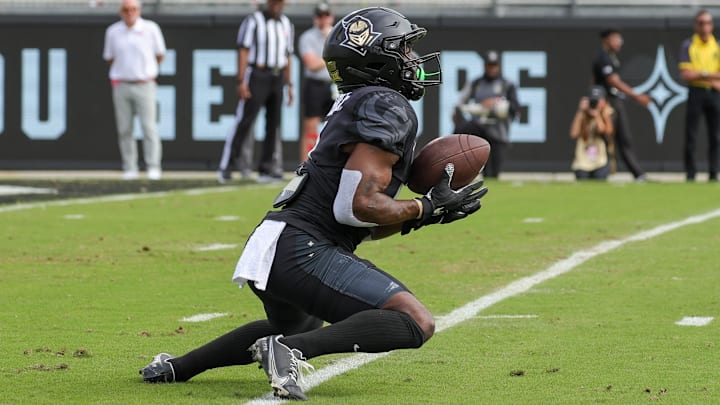UCF football has had its fair share of plays messed up by certain rules in college football, from certain penalties to down rules to clock stoppages. The Knights and every team in college football probably hope that they could have some of the same rules as the NFL.
Some rules do benefit the college players before they get to the NFL, but there are quite a few rules that make the game a little tougher for those in college versus those in the NFL.
So let's take a look at the differences between certain college football rules and NFL rules.
Down by contact
In college football, the down-by-contact rule is whenever a player's knee, elbow, or shin touches the ground. The players do not have to be downed by an opposing player. However, in the NFL, a player must be downed by another player even if one of those body parts touches the ground after a catch.
Catches
Now this rule is easier for college players than it is for NFL players. For college players, when they are making a catch, they need to have only on foot down in bounds for the catch to count. In the NFL, players need to have two feet down in bounds for the catch to count.
Clock stoppage in final two minutes
In college football, the clock used to stop after every first down which was very different from the NFL. However, in 2023, college football made a change that the clock would only stop on a first down within the final two minutes of both halves.
Defensive pass interference
In college football, the defensive pass interference call is only worth 15 yards rewarded to the offense. In the NFL, defensive pass interference means the ball is set where the catch was attempted, so it could be 50 yards down the field or 20 yards down the field, not just 15 yards. Also if pass interference occurs in the endzone in the NFL, the ball is then placed on the 1-yard line.
Overtime rules
In college football, overtime is set where each team gets a possession starting on the 25-yard line. The overtime ends when one team does not score, however, after two overtimes, the teams have to try and convert 2-point conversions instead, meaning a college football game cannot end in a tie. In the NFL, the game can end in a time, with overtime being another 10-minute quarter, but if the team that got the ball scored a touchdown on their first drive they win, if not both teams have a chance to win at the end.
